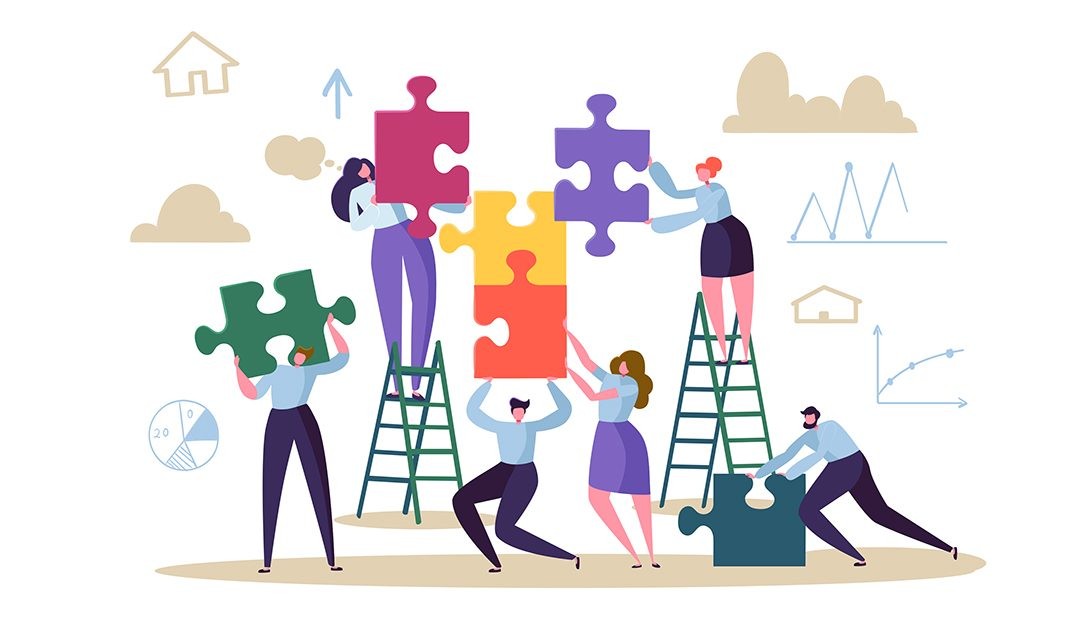Effective Feedback Mechanisms in Teams
Discover how structured feedback processes can transform your team's performance, communication, and overall success.
Published by Al Mithaq Institute
Last updated: April 17, 2023
In today's fast-paced professional environments, effective feedback is not just helpful—it's essential for team growth and organizational success. This article explores proven mechanisms to implement feedback systems that work.
Why Feedback Matters in Team Environments
Feedback is the cornerstone of professional development and team improvement. When implemented correctly, effective feedback mechanisms create numerous benefits:
Enhanced Performance
Regular, constructive feedback helps identify improvement areas and reinforces positive behaviors, leading to consistent performance enhancement.
Strengthened Relationships
Well-delivered feedback builds trust between team members and leadership, creating stronger professional relationships.
Increased Engagement
Employees who receive meaningful feedback are more engaged and invested in their work and the organization's success.
Continuous Learning
Feedback creates a culture of continuous learning where growth and improvement become normalized parts of work life.
Despite these benefits, many organizations struggle to implement effective feedback mechanisms. A Harvard Business Review study found that 63% of employees feel they don't receive enough constructive feedback to improve their performance.
Core Elements of Effective Feedback Systems
Building a robust feedback mechanism in teams requires careful consideration of several key elements:
1. Timing and Frequency
Effective feedback should be:
- Timely - Delivered close to the observed behavior to maintain relevance
- Regular - Scheduled consistently, not just during annual reviews
- Balanced - Providing feedback in both formal and informal settings
Best Practice Spotlight
Many high-performing teams implement a "feedback Friday" practice, where team members spend 30 minutes giving and receiving feedback on weekly accomplishments and challenges.
2. Structure and Specificity
Well-structured feedback follows these principles:
- Focuses on specific behaviors or outcomes rather than personality traits
- Includes concrete examples that illustrate the point
- Connects observations to impact (on team, organization, or clients)
- Concludes with actionable suggestions for improvement
The SBI (Situation-Behavior-Impact) model provides an excellent framework for structuring feedback conversations:
- S
Situation: Describe the specific context where the behavior occurred
- B
Behavior: Describe the actual observable behavior, without judgment
- I
Impact: Explain the effect or consequence of that behavior
3. Psychological Safety
For feedback mechanisms to be effective, teams need to establish psychological safety:
- Create an environment where team members feel safe to express concerns
- Normalize feedback as a two-way process rather than top-down criticism
- Separate performance feedback from compensation discussions when possible
- Train team members on how to receive feedback non-defensively
The single most important thing a leader can do to create effective feedback mechanisms is to demonstrate vulnerability. When leaders openly receive feedback, they model the behavior they wish to see in their teams.
Implementing Feedback Mechanisms in Teams
Moving from theory to practice requires implementing specific feedback mechanisms. Here are four proven approaches:
1. 360-Degree Feedback
This comprehensive approach gathers feedback from multiple sources—supervisors, peers, direct reports, and sometimes clients—to provide a well-rounded view of an individual's performance.
Implementation Tips:
- Use anonymized responses to encourage honesty
- Focus questions on specific competencies and behaviors
- Include self-assessment for comparison
- Follow up with one-on-one discussions to process feedback
2. Regular Retrospectives
Borrowed from Agile methodologies, retrospectives are structured team meetings that review recent work periods to identify what went well, what didn't, and how processes can be improved.
Implementation Tips:
- Schedule consistently after project milestones or in regular intervals
- Use a facilitator to guide discussion and ensure all voices are heard
- Focus on processes and systems rather than individual performance
- Create actionable improvement plans from insights
3. Peer Recognition Programs
These programs formalize positive feedback by allowing team members to recognize each other's contributions, reinforcing desired behaviors and boosting morale.
Implementation Tips:
- Create a simple, accessible platform for recognition
- Align recognition categories with organizational values
- Make recognition visible to the broader team
- Consider small rewards for exceptional recognition
4. Continuous Feedback Channels
These are ongoing, informal feedback opportunities that supplement formal reviews, allowing for real-time performance adjustment and recognition.
Implementation Tips:
- Implement regular 1:1 meetings between managers and team members
- Create digital channels for quick feedback sharing
- Train managers on effective coaching conversations
- Document informal feedback for reference in formal reviews
Overcoming Common Feedback Challenges
Challenge: Feedback Avoidance
Many managers and team members avoid giving feedback due to discomfort with potential conflict.
Solution: Start with appreciation feedback before moving to coaching feedback. Build feedback skills through training and practice.
Challenge: Defensive Responses
Recipients may react defensively to feedback, limiting its effectiveness.
Solution: Train team members in receiving feedback, emphasize a growth mindset, and create psychological safety.
Challenge: Cultural Differences
Feedback approaches vary across cultures, creating potential misunderstandings in diverse teams.
Solution: Provide cultural intelligence training and adapt feedback approaches to accommodate different communication preferences.
Challenge: Remote/Distributed Teams
Virtual environments make it harder to provide nuanced feedback and read responses.
Solution: Use video when possible, implement digital feedback tools, and schedule more frequent check-ins to compensate for reduced informal interactions.
Measuring Feedback Effectiveness
To ensure your feedback mechanisms are working, implement these measurement approaches:
| Metric | What It Measures | Collection Method |
|---|---|---|
| Feedback Frequency | How often feedback is exchanged in teams | Feedback platform analytics, survey data |
| Action Implementation Rate | Percentage of feedback that results in behavior change | Follow-up assessments, performance tracking |
| Employee Satisfaction | How employees perceive the feedback process | Pulse surveys, engagement metrics |
| Performance Improvement | Changes in key performance indicators after feedback | Performance metrics, quality assessments |
Training Opportunity
Al Mithaq Institute offers specialized training in feedback mechanisms as part of our Human Resource Management and Leadership Skills programs. Our courses help professionals develop the ability to give and receive feedback effectively, creating positive team dynamics.
Explore Our CoursesFAQ: Effective Feedback Mechanisms
Feedback should be given regularly through both formal and informal channels. For formal feedback, quarterly check-ins are recommended rather than only annual reviews. Informal feedback should occur in real-time when behaviors or achievements are observed. The key is consistency – teams benefit most from ongoing feedback rather than infrequent, intensive sessions.
Critical feedback should be:
- Specific and behavior-focused rather than personality-focused
- Balanced with positive observations
- Solution-oriented, offering concrete suggestions for improvement
- Delivered privately in a supportive environment
- Framed as an opportunity for growth rather than punishment
The "feedback sandwich" approach (positive-improvement-positive) can be effective when used authentically, not formulaically.
Both approaches have merits depending on context:
Anonymous feedback can be beneficial when:
- There are significant power differentials
- The team is still building psychological safety
- Collecting sensitive information about leadership
Transparent feedback is preferable when:
- Building a culture of open communication
- Allowing for dialogue and clarification
- Working in high-trust environments
Many teams use a hybrid approach, with both anonymous surveys and transparent face-to-face conversations.
Remote and hybrid teams require intentional adaptation of feedback mechanisms:
- Use video for sensitive feedback conversations to capture non-verbal cues
- Implement digital tools specifically designed for remote feedback (e.g., Officevibe, 15Five)
- Increase the frequency of check-ins to compensate for reduced informal interactions
- Create virtual spaces for peer recognition and feedback
- Document feedback more thoroughly to avoid misinterpretation
- Be mindful of time zones when scheduling feedback sessions
Conclusion: Building a Feedback-Rich Culture
Effective feedback mechanisms are not just processes or tools—they're cultural elements that reflect and shape organizational values. When implemented well, they create a virtuous cycle of continuous improvement, trust-building, and enhanced performance.
Remember that feedback systems should evolve as your team grows and changes. Regularly assess your feedback mechanisms to ensure they remain relevant, efficient, and aligned with your team's needs and organizational goals.
By investing in thoughtful feedback processes, you're not just improving current performance—you're building the foundation for long-term team success and individual growth.
For more information on developing effective feedback skills and implementing robust feedback mechanisms in your organization, contact Al Mithaq Institute for Educational Services. Our professional development programs, including Human Resource Management and Leadership Skills, provide comprehensive training in these critical areas.







